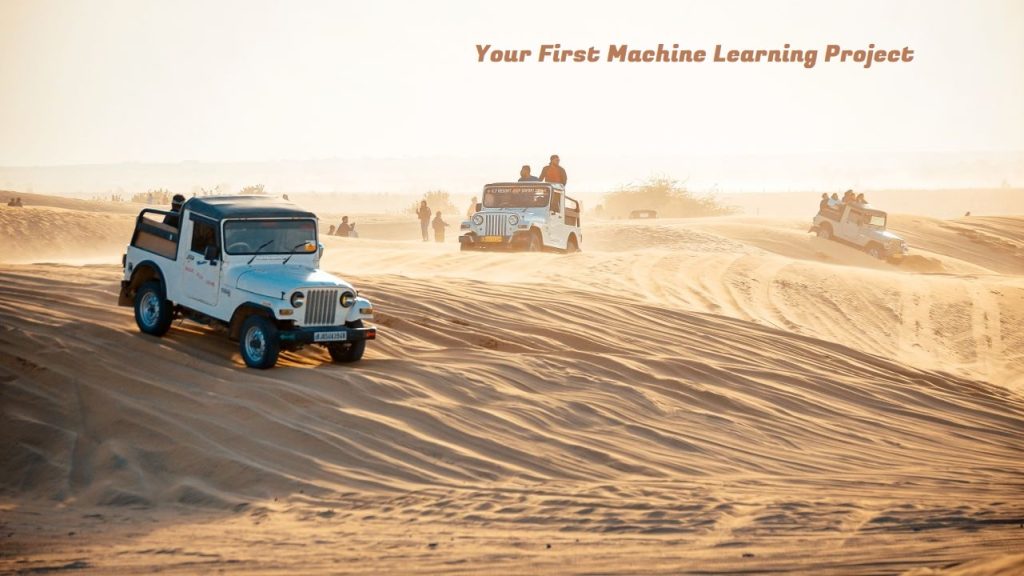Let’s build your first machine learning project with Python from scratch.
“But I am a complete beginner, I am not ready yet!..” – Your mind voice.
If you have been looking to get started in ML, but can’t really figure out how and where to start, then this one is for you. Just read on..
Introduction
You do not need to understand everything to get started. You need not be an expert in ML or be a great Python programmer. You do not need to know how the algorithms work. Not yet at least. Just pay attention to the overall logic and flow for now.
This guide will help you understand the core purpose behind the various steps in ML and stitch the ideas together as we go along.
We are just starting, focus on the key steps for now, you will know how to go deeper amidst the pages of these lessons.
Typical Steps in machine learning for prediction
In general, most machine learning programming workflows will have the following steps:
- Formulate the exact ML problem
- Prepare data and analyse
- Build ML model and evaluate
- Improve, finetune and Store
- Predict.
Well, that’s the summary at a high level at least. There are nuances to this, which you will know about in this series. The concepts will be lot easier to understand if it is broken down into smaller practical steps.
Building Machine Learning Project in 14 Steps
So, this lesson is broken down into the following 14 steps:
Part 1: Setup and Analysis
- Lesson 1: How to Formulate Machine Learning Problem
- Lesson 2: Setup Python environment for ML
- Lesson 3: ML Modeling – Problem Description and Datasets
- Lesson 4: Exploratory Data Analysis (EDA)
Part 2: Data Preparation
- Lesson 5: Data Preparation – Handling Missing Values
- Lesson 6: Data Preparation – Outliers in data
- Lesson 7: Data Preparation – Encoding categorical features
- Lesson 8: Data Preparation – Feature Scaling
Part 3: ML Training
- Lesson 9: Train Test Split for validating machine learning models
- Lesson 10: Train ML Models and make predictions
- Lesson 11: k-Fold cross-validation to Select Best Model
- Lesson 12: Class imbalance and Hyper Parameter tuning
- Lesson 13: Tune Hyperparameters
- Lesson 14: Save and Load the Machine learning Models
- You can do machine learning
To understand these concepts, a standard dataset is preferable to make learning easier. We will look into solving industry projects later.
The overall lessons are structured in such a way that by making small changes, you will be able to apply the concepts and steps for other datasets as well.
Let’s get started.






